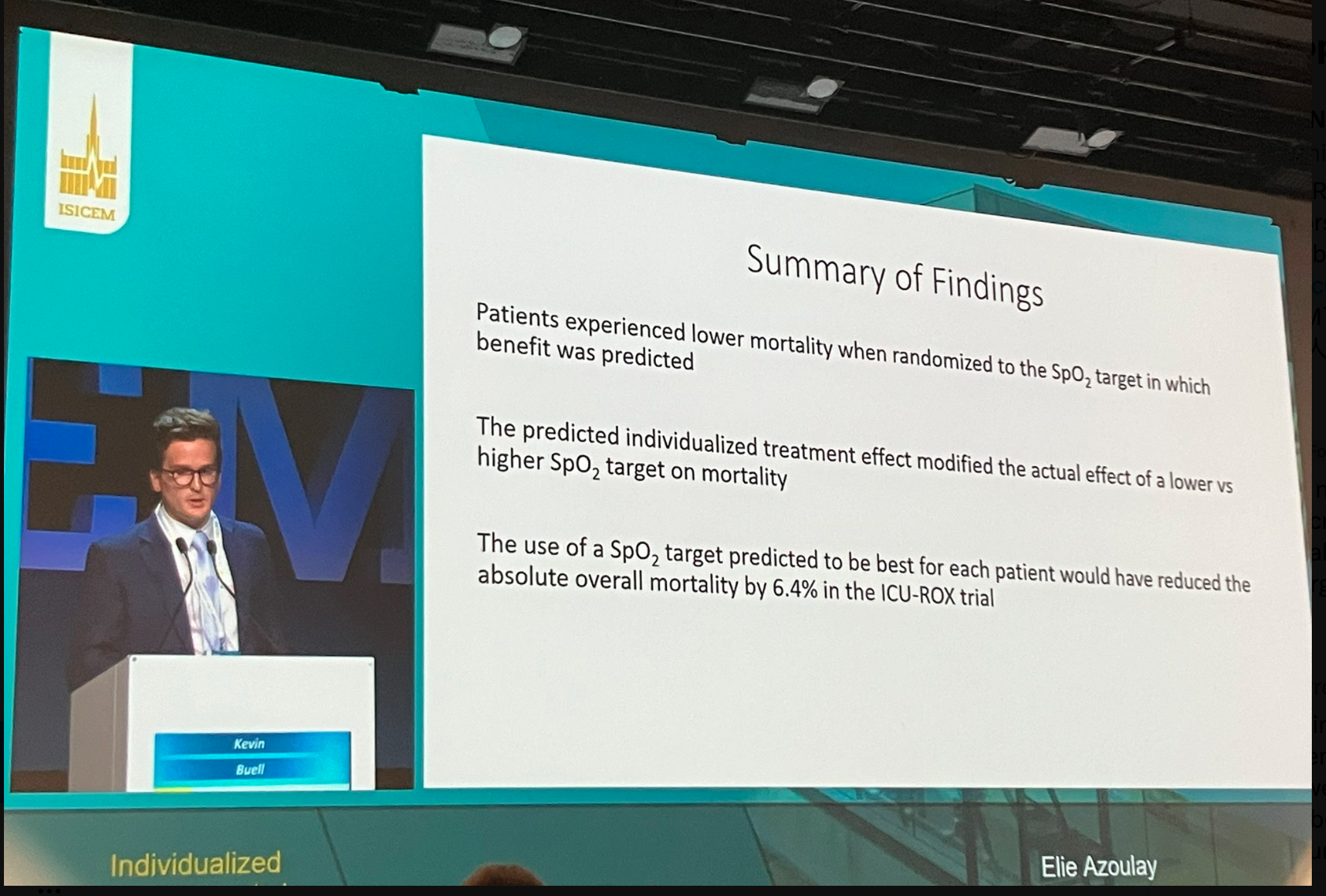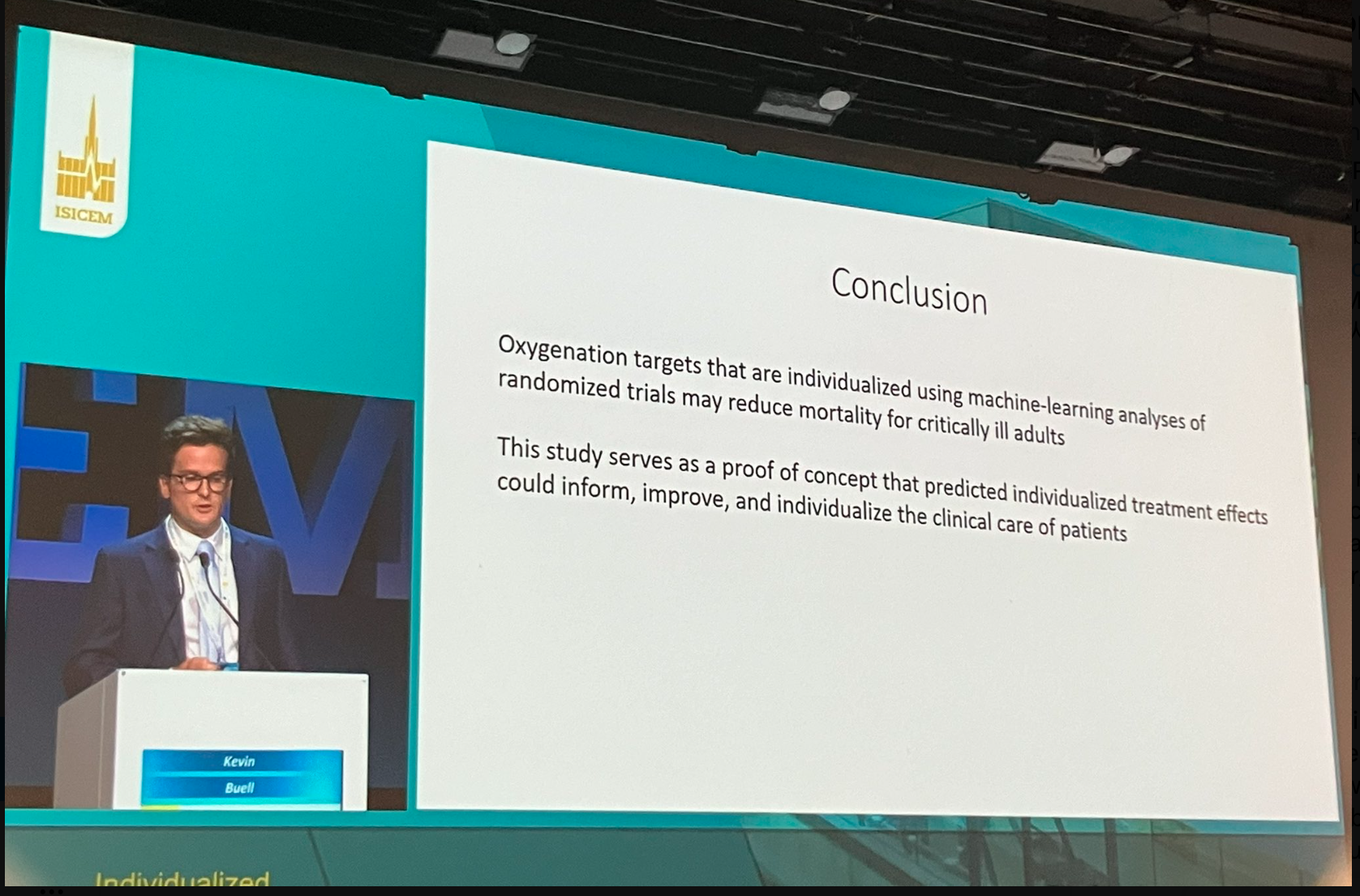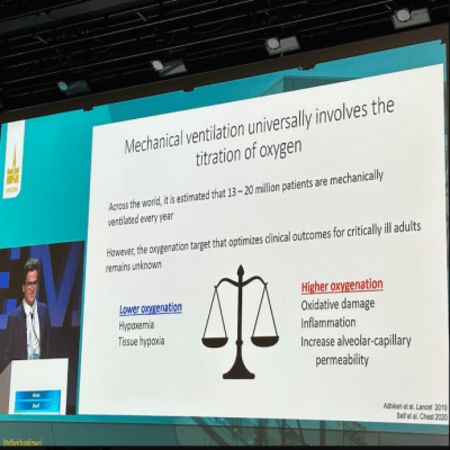New findings were presented at ISICEM 2024 evaluating a machine learning model to predict individualised treatment effects using two temporally and geographically distinct clincial trials of lower vs higher oxygen targets in critically ill patients receiving mechanical ventilation.
Mechanical ventilation involves titrating the fraction of inspired oxygen to maintain arterial oxygenation, but the optimal oxygenation target for critically ill adults remains uncertain. Previous randomised trials have shown similar outcomes for lower oxygenation targets aimed at avoiding hyperoxia and higher targets aimed at preventing hypoxaemia. However, retrospective and post hoc analyses suggest that the ideal target may vary depending on factors like hypoxaemic brain injury, traumatic brain injury, shock, or sepsis. Traditional subgroup analyses may not adequately address this variation, leading to the exploration of machine learning methods to predict individualised treatment effects.
This study aimed to investigate if the effect of peripheral oxygenation-saturation (SpO2) targets on mortality differed based on individual patient characteristics. It derived and externally validated predicted individualised treatment effects using data from two separate randomised trials conducted in different locations and time frames involving critically ill patients receiving mechanical ventilation.
A machine learning model was developed to forecast the impact of treatment with either a lower or higher SpO2 target on mortality for individual patients. This model was created using data from the Pragmatic Investigation of Optimal Oxygen Targets (PILOT) trial and subsequently validated externally in the Intensive Care Unit Randomized Trial Comparing Two Approaches to Oxygen Therapy (ICU-ROX) trial. Critically ill adults who received invasive mechanical ventilation in ICUs participated in these trials, with the PILOT trial conducted in the United States from July 2018 to August 2021 (n = 1682) and the ICU-ROX trial conducted across 21 ICUs in Australia and New Zealand from September 2015 to May 2018 (n = 965).
The main exposure was randomisation to either a lower or higher peripheral oxygenation saturation (SpO2) target group. The primary outcome measure assessed was 28-day mortality.
In the validation cohort of the ICU-ROX trial, the predicted effect of treatment with either a lower or higher SpO2 target varied widely for individual patients, ranging from a 27.2% absolute reduction to a 34.4% absolute increase in 28-day mortality. Patients predicted to benefit from a lower SpO2 target tended to have a higher prevalence of acute brain injury, whereas those predicted to benefit from a higher SpO2 target had a higher prevalence of sepsis and abnormally elevated vital signs.

Patients who were predicted to benefit from a lower SpO2 target experienced lower mortality when randomised to the lower SpO2 group, while those predicted to benefit from a higher SpO2 target had lower mortality when randomised to the higher SpO2 group. If each patient had been assigned the SpO2 target predicted to be best for them rather than the randomised SpO2 target, overall mortality would have been reduced by 6.4% (95% CI, 1.9%-10.9%).

These findings show that individualised oxygenation targets, determined through machine learning analyses of randomised trials, hold promise for reducing mortality among critically ill adults. However, a dedicated trial evaluating individualised oxygenation targets is warranted to validate this approach and assess its effectiveness.
Source: JAMA, ISICEM
Image and Slide Credit: ISICEM



























